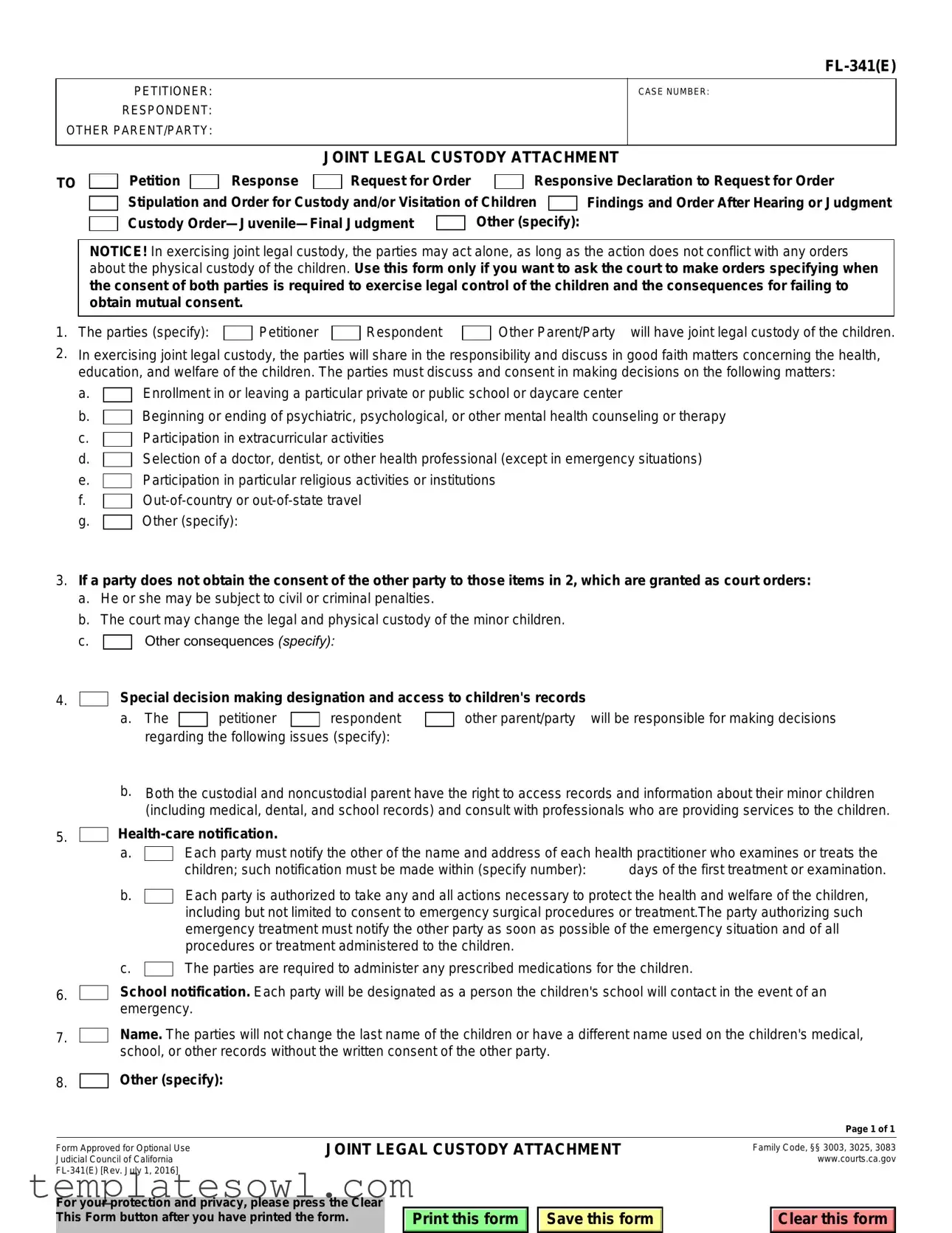What is the FL-341 E form?
The FL-341 E form is a legal document used in family law cases involving joint legal custody of children. It helps parties outline their responsibilities and decision-making processes regarding the health, education, and welfare of the children involved in the case.
Who should use the FL-341 E form?
This form should be used by parents or parties who are seeking to establish or modify joint legal custody arrangements. If you want to specify shared decision-making responsibilities and the need for mutual consent in certain situations, this form is appropriate.
What topics are covered in the FL-341 E form?
The form covers various topics related to joint legal custody, including matters of education, health care, religious activities, and travel. It specifies areas where consent from both parties is necessary before making decisions affecting the children.
What happens if one party does not obtain consent from the other?
If a party does not obtain the required consent, several consequences may follow. These can include civil or criminal penalties, changes to the legal and physical custody of the minor children, and other specified consequences that may be outlined in the court order.
How does the form specify decision-making responsibilities?
The FL-341 E form allows the parties to designate who will make specific decisions about the children’s welfare. This includes topics like healthcare, education, and other important matters. These designations should be clearly listed in the form.
What are the notification requirements regarding children's health care?
Each party must notify the other within a specified number of days regarding the name and address of each health care practitioner who treats the children. This ensures both parents are informed and involved in their children's health care.
Is there a requirement to administer medications?
Yes, both parties are required to administer any prescribed medications for the children. This mutual responsibility is intended to safeguard the children’s health and well-being.
Can the children's last name be changed without consent?
No, neither party can change the children’s last name or use a different name on official records without the written consent of the other parent. This principle helps maintain consistency in the children's identity and records.
What should parties do in emergency situations?
In emergencies, either party is authorized to take the necessary actions to protect the children’s health and welfare. This may include consenting to emergency medical treatment. However, the party who takes such action must notify the other as soon as possible of the situation and any procedures administered.
Where can I find more information about the FL-341 E form?
More information can be found on the Judicial Council of California's website or by consulting a family law attorney. Understanding the implications of the form and the legal obligations it entails is vital for effective co-parenting.


 Other consequences
Other consequences 
 Each party is authorized to take any and all actions necessary to protect the health and welfare of the children, including but not limited to consent to emergency surgical procedures or treatment.The party authorizing such emergency treatment must notify the other party as soon as possible of the emergency situation and of all procedures or treatment administered to the children.
Each party is authorized to take any and all actions necessary to protect the health and welfare of the children, including but not limited to consent to emergency surgical procedures or treatment.The party authorizing such emergency treatment must notify the other party as soon as possible of the emergency situation and of all procedures or treatment administered to the children.